Five Seductive Pick-Up Lines That Leave Your Visitors Wanting More
February 2014
By Jeremy Girard
For many of your website’s visitors, the page that will greet them when they first arrive on the site is your homepage – and the section of your homepage that is likely to draw their attention upon arrival is the billboard.
Similar to roadside billboards that are meant to attract the attention of passing motorists and promote some company or service, homepage billboards are meant to grab the attention of a website visitor, welcome them to the site and convey some important message to them, and then send them forward to other content or actions within that site.
Take a look at just about any website today and you will see this “billboard” area. It is typically presented as a large, visually rich display that features striking imagery and/or powerful typography, important messages, and a subsequent call-to-action. Additionally, these messages can also be animated in some way to add an element of motion to the site and to allow you to use the billboard to display more than on message on your homepage.
While the purpose of the billboard is nearly identical on all websites, the way this section is executed varies from site to site. In this article, we will take a look at a few popular approaches to the website billboard.
1. Allow me to introduce myself.
Probably the most common billboard approach is what I call the “here’s who we are and what we do” technique. In these examples, the billboard message is all about your company.
Similar to an elevator pitch, this billboard approach quickly introduces your company and summarizes what you do. With attention spans online being as short as they are (many experts say that website visitors will scan a page and make a decision of what to do next, including leaving the site altogether, in as little as 3 seconds), this approach can be an effective way to get your message or value proposition across in a succinct fashion. If that message resonates with your visitors, you then have an opportunity to continue the conversation by driving them deeper into the website to learn more about what you have teased in the billboard message. You could provide links to read more about your services, products, or even just the company or organization itself.
A few examples of the “here’s who we are and what we do” method are below:
Studio1 Architects
This site uses very large images of the firm’s work (the images animate and multiple photos fade in and out over time), coupled with an opening message that explains what they do and a link to view their portfolio: http://studio1architects.com

AF Technology Solutions
This site’s concise billboard message summarizes what the company does (business and technology solutions) and who their audience is (small to medium businesses) and includes a link to learn more about their services: http://af-techsolutions.com
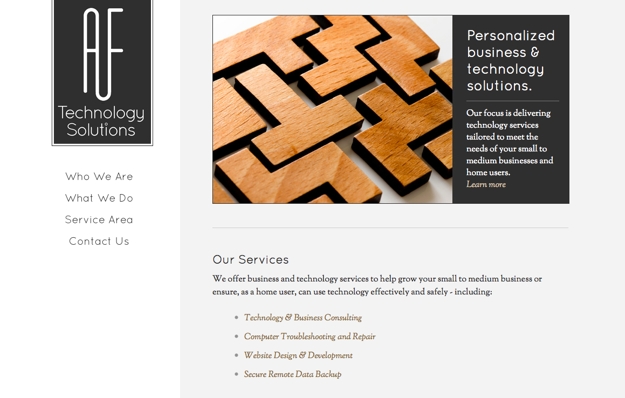
Raw Seafoods
This company uses their billboard to highlight their value proposition and then link visitors over to a page detailing what sets their products and services apart from their competition: http://www.rawseafoods.com
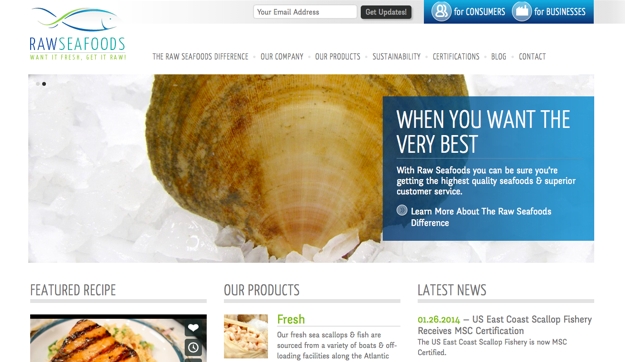
2. What can I do for you?
While the “here’s who we are and what we do” approach is the most common way to utilize a billboard’s messaging, there is a downside to that tactic – it focuses solely on the company or organization and not on the audience they serve. As a variation to that approach, you can consider the “how may we help you?” method.
With the “how may we help you?” technique, the messaging focuses on the website’s audience, not the company that owns the website. Instead of being about that company, their products, or services, it instead looks to its users and illustrates about how that company can help them. The focus turns from “us” to “you”.
A few examples of the “how may we help you?” variation are below:
2-1-1 RI
This not-for-profit site run by the United Way does not use any imagery in its billboard. It instead turns to bold colors and large typography to display its message – “Find Help Now”. The billboard does not explain what the organization does (that content is below the billboard). Instead, the focus here is on the user and the action is all about getting them the help they need by answering two simple questions (what do you need and where do you need it) or by clicking on a popular category: http://www.211ri.org

RIHCA
This site uses animated photos alongside a large message to attract their audience’s attention and address their main need – “Do you need healthcare?” The call to action is a simple and obvious button to “Get Started”: http://www.rihca.org
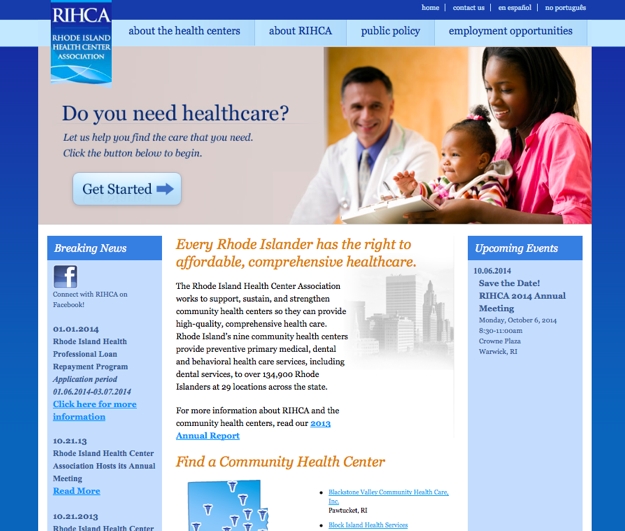
3. Tell me more about yourself.
Similar to the “how may we help you?” method, the “tell us who you are” approach speaks directly to your audience, but it does so in such a way so that it can ask that audience a specific question about who that audience is. The best example of this is a website that requires visitors to self-segment themselves.
Most websites have more than one audience and oftentimes there is different content on your website that is intended for these specific audiences. Having visitors “choose their path” by self-segmenting early on is one way you can drive them to content that is relevant for them, without worrying that they will have to get through pages that may not be necessary for them to see.
A few examples of self-segmentation on websites are below:
Traveler Beer Company
Any beer or liquor company will present this “Are You 21+?” message on their opening page to require that visitors confirm that they are of drinking age before entering the site. This is a form of self-segmentation: http://travelerbeer.com
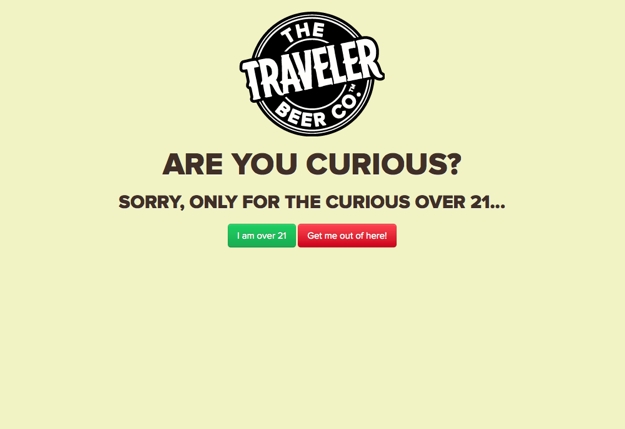
Cosmed Group
This company knows that their customers fall into one of two groups – those looking for the pasteurization services that they offer or those who want to buy the equipment to do it themselves. Therefore, they present these two paths (looking for services vs. looking for products) in their billboard so that visitors can self-segment based on their needs: http://cosmedgroup.com
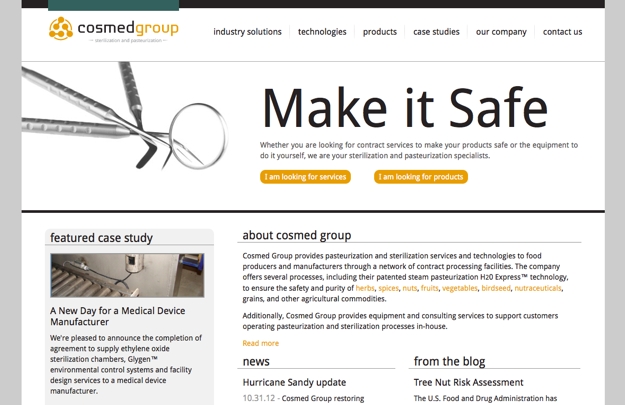
4. Let’s get personal.
Taking self-segmentation a step further are sites that already know who you are. These are sites that you subscribe to or have a user account on. Based on your preference or previous activity on the site, the content that is displayed is deemed to be most relevant to your needs.
The most prominent example of this method is Amazon.com. Visit the Amazon homepage and, as long as you are logged in, the products that you see will be based on your previous browsing or purchase history.
Another good example would be eBay. That site will show you results from searches you have conducted in the past in an attempt to present you with new auction items that you would be interested in.
Many news sites work in this way as well. Content that is most relevant for you, based on your preferences or geographic location, will be presented to you up front to try to best tailor your site experience to you.
One note here is that in these examples, Amazon, eBay, and the typical news site, do not present this information in a true, billboard-style fashion - but the same principal of filtering content based on a users’ preference or past behaviors on the site could also be applied to a billboard area.
5. What’s new?
The final approach we will look at in this article is the “latest news and announcements” method. This approach ensures that your site’s billboard is continually updated with fresh content. It displays current promotions, latest news, or important announcements (and usually a link to read more about that content) instead of general marketing messages.
The value of this approach is in the aforementioned freshness it brings to your content and your display. The downside is that it requires you to be publishing that new content on a pretty regular basis and you need to make a commitment to doing so.
If your organization is already producing relevant press releases or running promotions, then this method may be a great fit for you.
A few examples of this method are below:
Fame Foundry
This approach is exactly what we do on our homepage. Each month, our latest articles are highlighted in our animated billboard.

Honey Dew Donuts
Current promotions and seasonal menu items are featured in this site’s animated billboard. Those messages align with other marketing the company is doing - including print, radio, and television, to ensure that the latest content is always presented front and center: http://honeydewdonuts.com
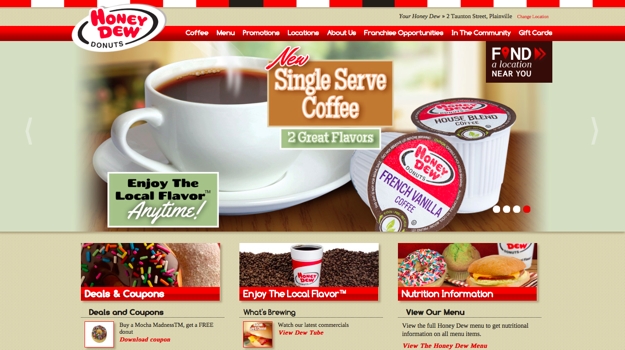
Marvel
Upcoming films, new comics, and other announcements are the focus of Marvel’s homepage billboard: http://marvel.com
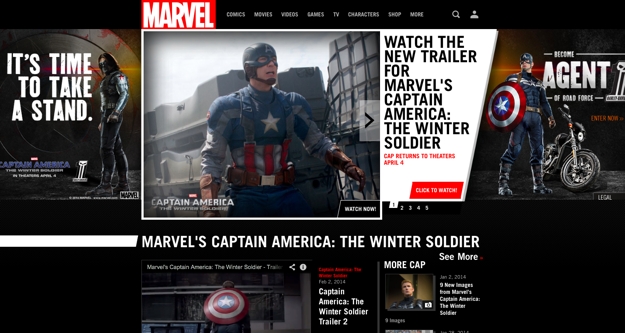
Mix and match
These billboard techniques are not mutually exclusive – you can mix and match them as you see fit. For instance, you may highlight a current promotion or announcement in your billboard, but then allow it to animate to a second and third and fourth, etc. message that is more generic – like the “here’s who we are and what we do” approach.
With so much space on your homepage being given over to the billboard’s display and understanding that the use of striking images, large typography, and animated messages will undoubtedly draw the focus of your visitors, it is important to make sure that the approach you choose for your billboard is the right choice for your business. Consult with your web design and development team to determine which approach, or which combination of different approaches, will best fit your overall goals and needs.
Jeremy Girard has been designing for the web since 1999. He is currently employed at the Providence, Rhode Island-based firm Envision Technology Advisors and also teaches website design and front-end development at the University of Rhode Island. In addition, Jeremy contributes regularly to a number of websites and magazines focused on business and the Web, including his personal site at Pumpkin-King.com.